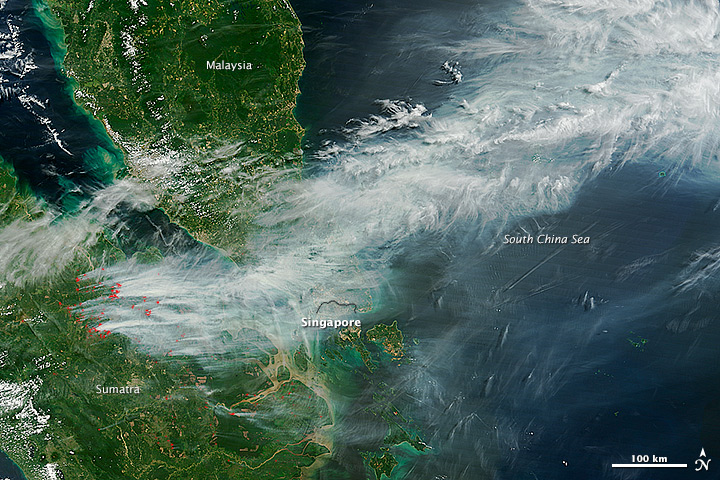
(NASA Satellite Image 2013)
ASEAN Environmental ministers from Singapore, Brunei, Thailand, Indonesia and Malaysia met in Brunei on April 2 to discuss ongoing efforts to counter transboundry haze.This was the 16th Meeting of the Sub-Regional Ministerial Steering Committee (MSC) on Transboundry Haze Pollution.The ministers noted the unfavorable conditions for 2014 brought about by below-average rainfall. This condition is likely to persist until October 2014.
On the positive side the ministers commended Indonesia for its efforts in implementing its Plan of Action (POA) dealing with transboundry haze. They also commended Indonesia for its efforts to expedite the process of ratification of the ASEAN Agreement on Transboundry Haze. In addition the ministers provided guidance on implementation of MSC activities to include:
- monitoring
- fire prevention
- establishing a Task Force to deal with fire suppression
ASEAN has been dealing with the Transboundry Haze problem since 1997 when it formed the Regional Haze Action Plan (RHAP) to deal with prevention, monitoring and mitigation. Malaysia was tasked with taking the lead in prevention, Indonesia with mitigation and Singapore with monitoring. The RHAP lead to the ASEAN Agreement on Transboundry Haze Pollution that was adopted in 2002 and entered into force in 2003.
Haze is defined as dust, smoke and dry particles in the atmosphere that distort clarity and limit visibility. In quantity, haze can be considered another form of pollution which degrades air quality and can lead to serious short and long term harm for human health.
The ASEAN area’s recent problems arise from a combination of dry weather that encourages the development of wildfires, and the clearing of land for commercial purposes. Traditional slash and burn methods of agriculture also contribute to a lesser degree.
While the 16th MSC’s meeting noted ongoing progress in dealing with the problem, the most worrying part of its statement is the prognosis for the continuation of dry conditions for the year 2014 which could lead to the formulation of a myriad on hotspots, sending smoke and particles into the atmosphere and threatening the region even further.
16th MSC Cross Border Meeting Final Media Release: http://app.mewr.gov.sg/web/contents/contents.aspx?contid=1959
 日本語
日本語 English
English 中国語
中国語